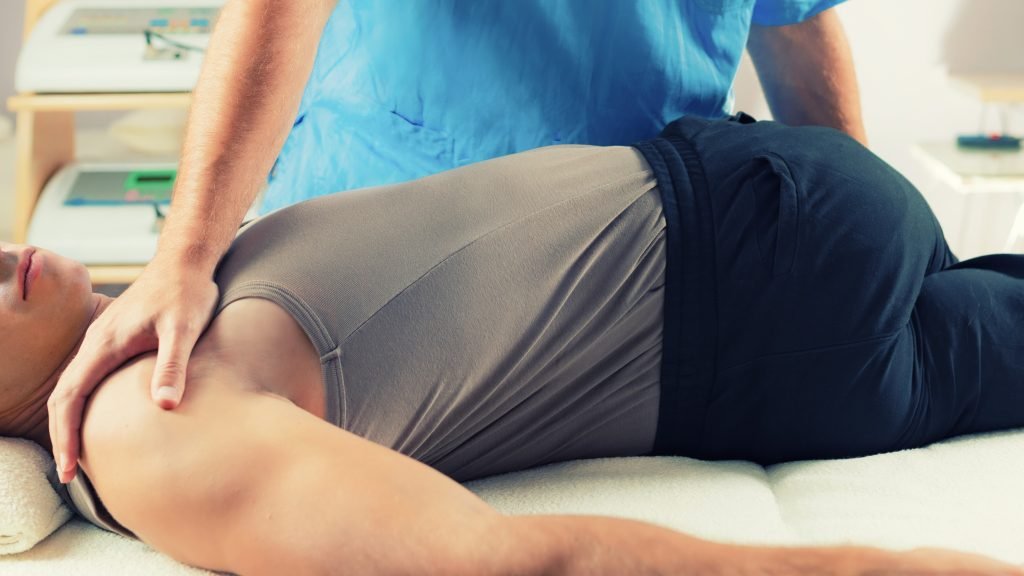
Fascial Stretch Therapy (FST) & Soft-Tissue Release (STR)
Fascial Stretch Therapy (FST)
What Is Fascia?
Fascia is the term used to describe a connective tissue found all over your body, holding together your muscles, internal organs, blood vessels, and nerves. In short, fascia is what keeps your entire body together.
However, fascia can also experience pain and discomfort with too much or too little activity, or even poor posture. With the help of fascial stretch therapy, we can help support these tissues, making it easier for you to recover from workouts and reduce the risk of injury while exercising.
What is Fascial Stretch Therapy
Fascial stretch therapy, sometimes known as FST, is a stretching regimen that is guided by your therapist who provides light traction to the joint and then takes the muscles and fascia into a comfortable, deep stretch that involves feedback and input from the client. FST is typically used as a recovery method for athletes who tend to overwork their bodies and experience symptoms like joint pain or muscle strain. However, FST can also be beneficial for people who work out recreationally.
Fascial Stretch Therapy, or FST, is also invaluable for easing post-workout soreness—known as delayed onset muscle soreness (DOMS)—in the 24-48 hours after intense physical activity. Our professional sports stretching techniques are designed to aid recovery and improve performance. Flexibility is crucial not only for extending an athlete’s career but also for preventing and recovering from injuries. FST, whether for performance, rehabilitation, or general wellness, plays a vital role in supporting the body’s overall health.
Our 30- or 60-minute stretch sessions, led by our professional kinesiologists, provide the same care athletes receive in training rooms. These sessions are tailored to restore flexibility and promote long-term mobility.
Whether you’re training for a marathon, participating in a weekend sports league, or simply dealing with poor posture and daily stress, FST can offer significant benefits. It’s not just for athletes—anyone can improve their flexibility, recover faster, and feel better with the right approach to stretching.
Benefits of FST
FST is a very, very relaxing and enjoyable therapy and while therapeutic results are highly individualized and depend on each case, it also has been known to help people with chronic conditions that didn't respond to other treatments. What you should experience are improvements in mobility and flexibility, improved posture, increased strength, and improved blood flow.
Those with specific conditions are also fit for FST including:
carpal tunnel syndrome
chronic headaches
chronic pain
low back pain
facet joint dysfunctions (faulty articulation of two discs of the vertebra)
fibromyalgia
mobility issues
recent injury to soft tissues
pinched nerves
plantar fasciitis
thoracic outlet syndrome (compression of nerves and/or blood vessels around your collarbone and first rib)
Please wear comfortable and flexible clothing to your appointment, and remember to wear socks.
What is Soft-Tissue Release (STR)
Soft Tissue Release, STR, is another dynamic and highly effective technique designed to deliver immediate and lasting benefits to muscles and connective tissues. By combining elements of Myofascial Release, Therapeutic Massage, and Active Assisted Stretching, STR applies precise pressure during targeted stretches performed across multiple planes of movement.
This technique aims to engage the autonomic nervous system, facilitating the spontaneous release of injured muscles and restoring them to their original resting length. The benefits are significant: scar tissue is rapidly and permanently reorganized, muscle imbalances are corrected, pain is reduced or eliminated, and overall muscle performance is enhanced.
STR delivers results quickly and is effective for both acute and chronic soft tissue injuries, making it a powerful tool for recovery and performance improvement.
Who Can Benefit from STR?
STR can be seamlessly integrated with therapist-assisted stretching or other manual therapy methods. Easy to apply and adaptable to various settings, STR can be performed in gyms, therapy clinics, or even on-site at sports fields and arenas.
Conditions Treated with STR:
Lower Leg Injuries
Plantar Fasciitis, Achilles Tendonitis, Shin Splints, Ankle Sprains, Foot and Arch Pain, Sesamoiditis, and deformities like Hammer and Claw Toes.
Knee Problems
Patellofemoral Syndrome, ITB Friction Syndrome, Jumper’s Knee, and Adductor or Hamstring Strains, can all benefit from STR techniques.
Low Back Pain
Acute flare-ups or chronic low back pain
Shoulder and Upper Body Issues
Deltoids, Supraspinatus, Levator Scapulae, Latissimus Dorsi, Rhomboids, Trapezius, and Pectoral muscles. It is also highly effective for conditions like Frozen Shoulder and tension in the Intercostals or Respiratory Muscles.
Neck Pain and Whiplash
Chronic and acute neck pain, including cases caused by whiplash injuries.
Elbow Pain
Tennis Elbow and Golfer’s Elbow
Forearm and Hand Conditions
Carpal Tunnel Syndrome and De Quervain’s Syndrome
Whether the goal is rehabilitation or performance optimization, STR is a powerful tool that supports the body’s natural healing processes, helping clients return to their daily activities or athletic pursuits with ease.
Explore Our Services
-

Physiotherapy
-

Registered Massage Therapy
-

Kinesiology
-

Orthopedic Braces & Supports


